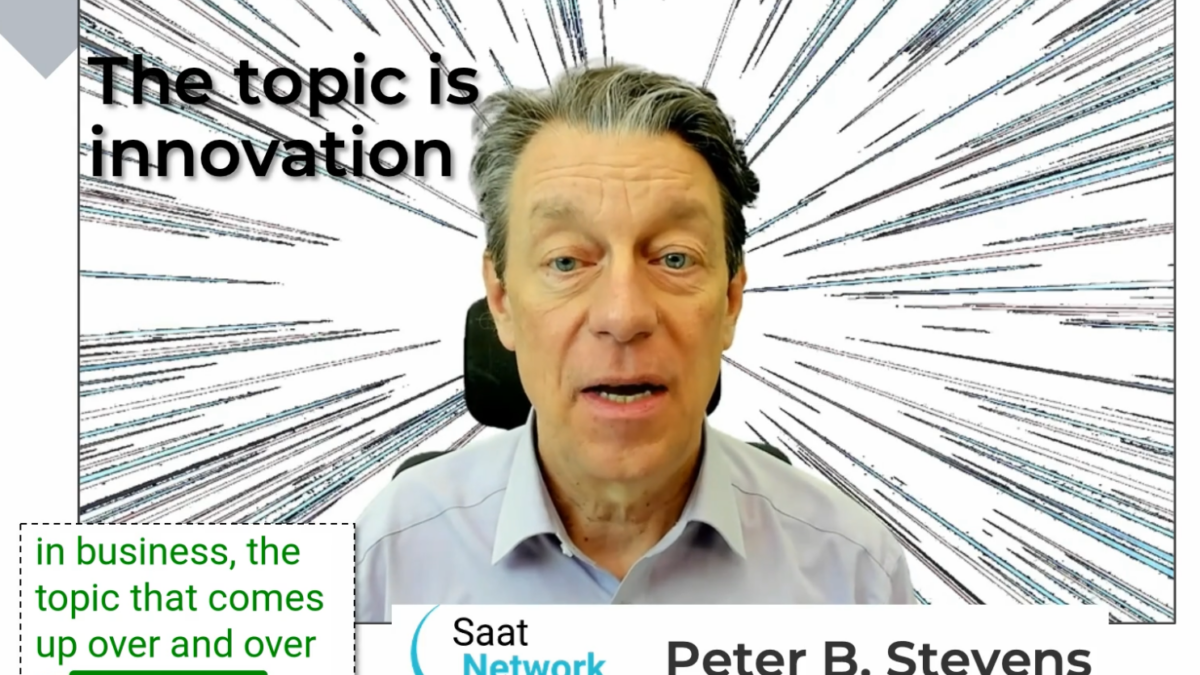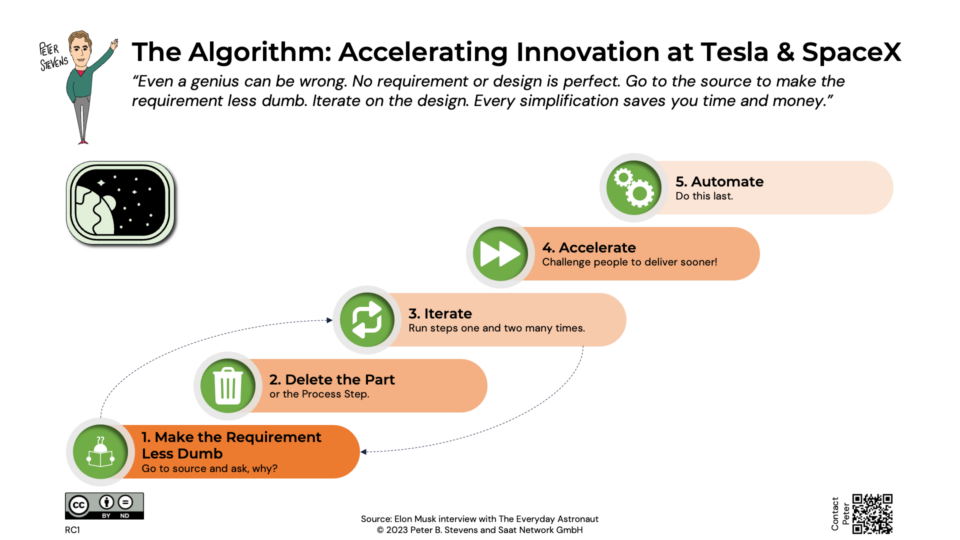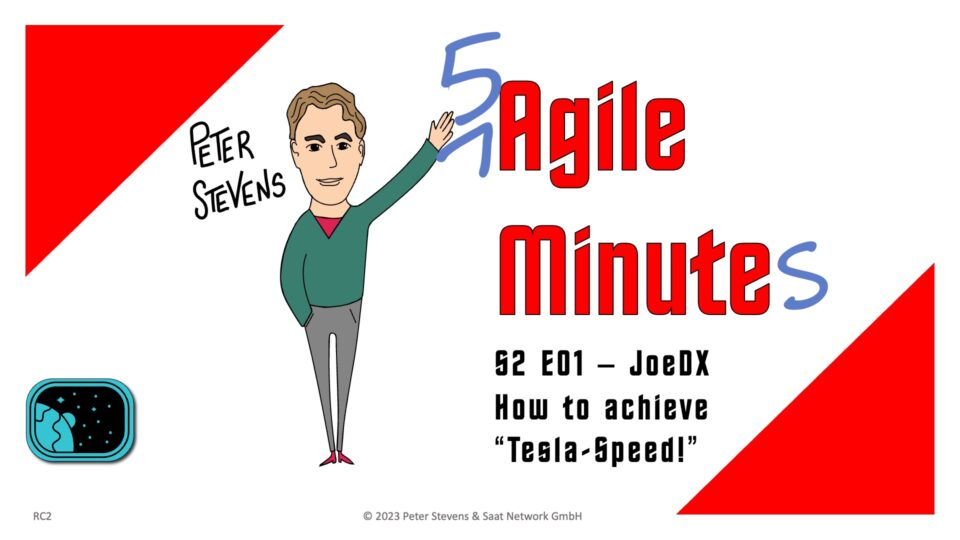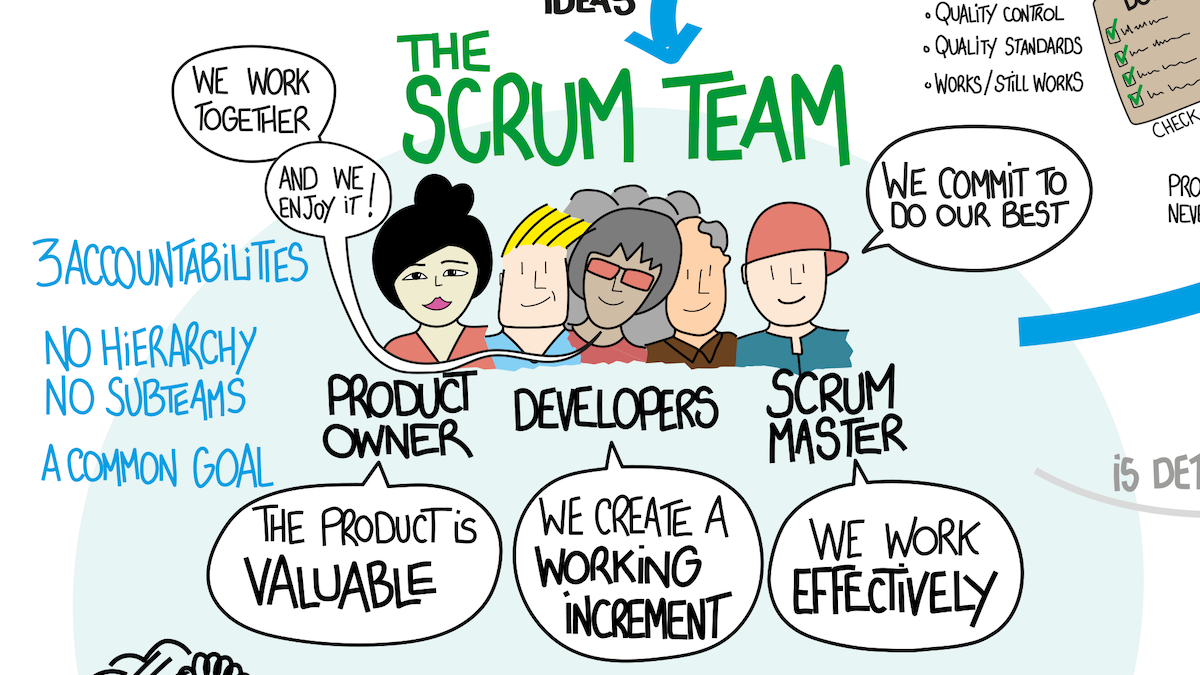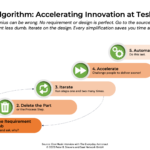
The Innovation Algorithm at Tesla and SpaceX
04-01-2024
Invitation to Club Aqua Agile Event
18-06-2024When I talk to my executive clients about their challenges in business, the topic that comes up over and over is innovation. Whether they are leaders of startups or established corporations, the message is the same. Success is all about innovation, particularly the speed of innovation. Now, why is that?
How can your company innovate faster?
Let’s take a closer look at what CEOs and senior executives are saying. A CEO has a lot on their plate. Economic uncertainty, regulations, AI, and digital transformations, to name just a few. But if you dig a bit deeper, what does a CEO really worry about? What could be life threatening for the company? It usually boils down to three things.
Need for Speed
The first is about speed. Sometimes it’s the fear of not fulfilling commitments to customers or investors. Sometimes it’s the fear that an emerging competitor will zip past you and make your company irrelevant. Either way, the question is, are you fast enough?
Frustration with own efforts
The flip side of that coin is the frustration with your own development initiatives. You feel like a snail on the highway. If your organization needs four years for a new development, but after two years you realize your product is no longer right for the market, you have a problem, and an expensive one to boot.
Or, your startup might be poised to grow fast, but constant restructuring distracts you from your core mission. You may even start to feel like a big company.
Talent Wars
The other aspect is what I call the talent wars. Imagine you are a recent graduate. You could go to an established company, but it could be years before your work will be visible to anyone. Or you could work for a startup. The pay is probably not as good, but you’ll see the impact of your work in a few months.
Which would you choose? The better pay, or the more satisfying work? Now here is the conundrum. How can you attract talented people if you’re not an attractive place to work? And if you can’t attract the best talent, how can you create great products moving forward?
Regardless of the size of your company, innovation speed is your competitive advantage. It makes your products more attractive to potential customers, and it makes your company an attractive place to work. How can you accelerate your innovation process? Well, if you’re a manufacturer who builds physical things, you want extreme manufacturing on your radar screen.
Extreme Manufacturing
XM was created at Project WikiSpeed, which was called into life to answer the progressive insurance XPRIZE challenge to create a highly efficient street legal automobile. Today, those techniques have been proven in places like Tesla, SpaceX, Bosch, and many more.
Why is Tesla so fast? Why are these companies so much better? Simple. Their focus is on speed of innovation. Tesla and Bosch are showing the rest of us what can be done in terms of innovation around physical products. Tesla has demonstrated releasing features on a few days notice. Bosch has delivered new products on multiple occasions that I’m aware of in just five to seven weeks.
The Challenge of Annual Budgets
Why is this so hard to match? Classically managed companies run on a different beat. The fundamental decision making process is the budgeting process, which runs on an annual calendar, and the time horizons may be much longer. Now, I grant you, there are, there is a reason the company budgets on a longer time frame, but the market is demanding faster innovation.
So what are you going to do about it? I do not believe that traditional lean thinking offers much help. While lean production focuses on improving quality, it does not emphasize improving the product once production has begun. Quite the opposite. The objective is to reduce variance. Ideally, every car comes out exactly the same, whether it’s the first car of the line, This is where Agile methods come in.
Scrum was a pioneer in the software domain, and extreme manufacturing, or XM, strives for flexibility and responsiveness when you are creating physical or hybrid products. There is still a gap between budgeting’s annual cycles and Agile’s monthly or weekly cycles. This is where OKRs, Objectives and Key Results, and PASS, the Personal Agility System, which is a simpler alternative to OKRs, come in to enable alignment on a more quarterly rhythm.
My name is Peter B. Stevens. People come to me to accelerate their initiatives. Often they are stuck and want to get unstuck. If you want to optimize more for innovation, scan the QR code to connect with me on LinkedIn, or look in the comments for the contact link. We can talk about what you want to achieve and the issues you face.
I can share proven and cutting edge methods and technologies that can help you to move forward.
You can also visit saat-network.ch for testimonials, references, contact, and more information. Last but not least, you can watch more about achieving industrial agility on the left or contact me at the QR on the right. Thank you for watching, follow me for more, and thank you for your like, comment, or share on this video.

